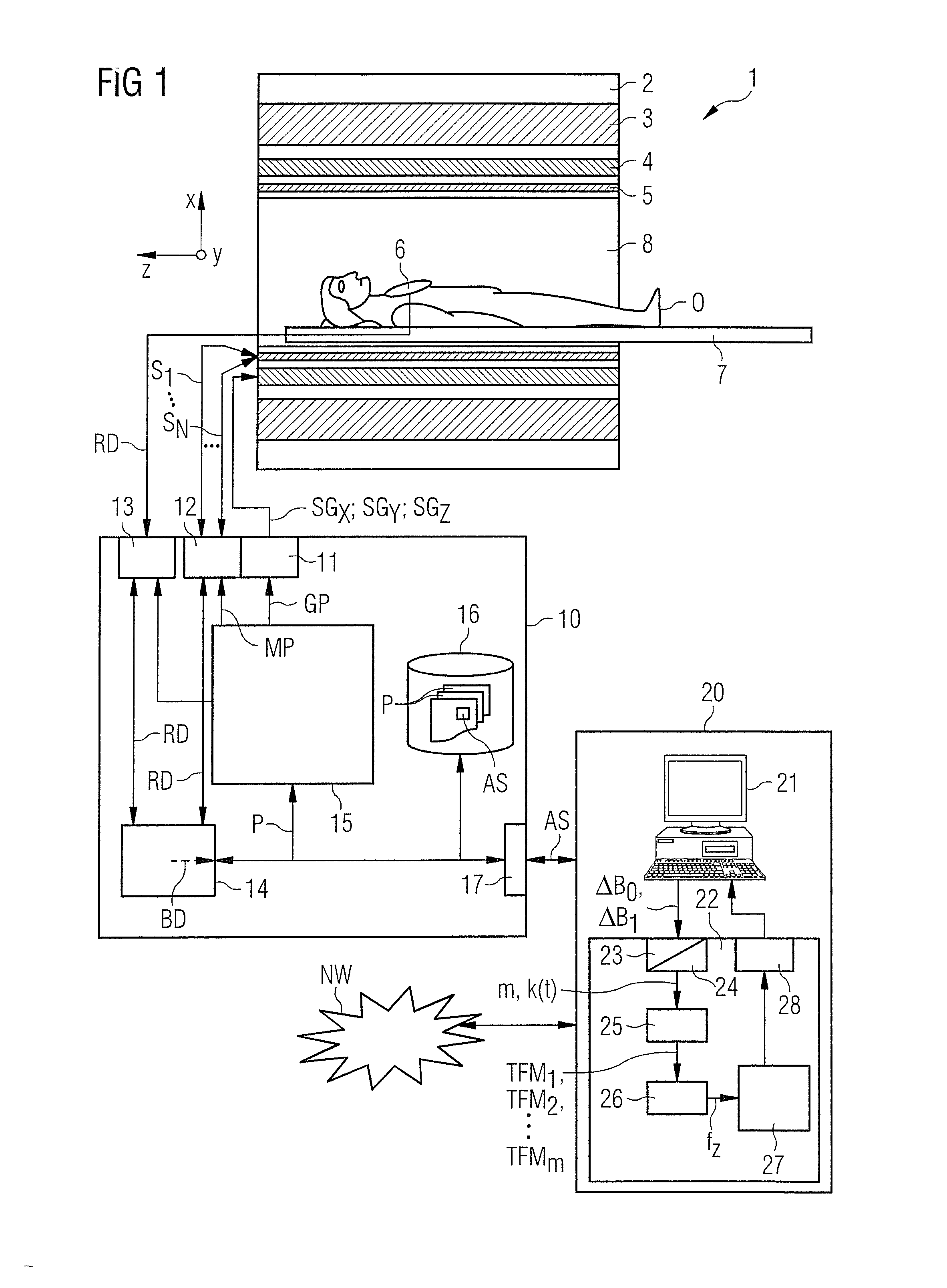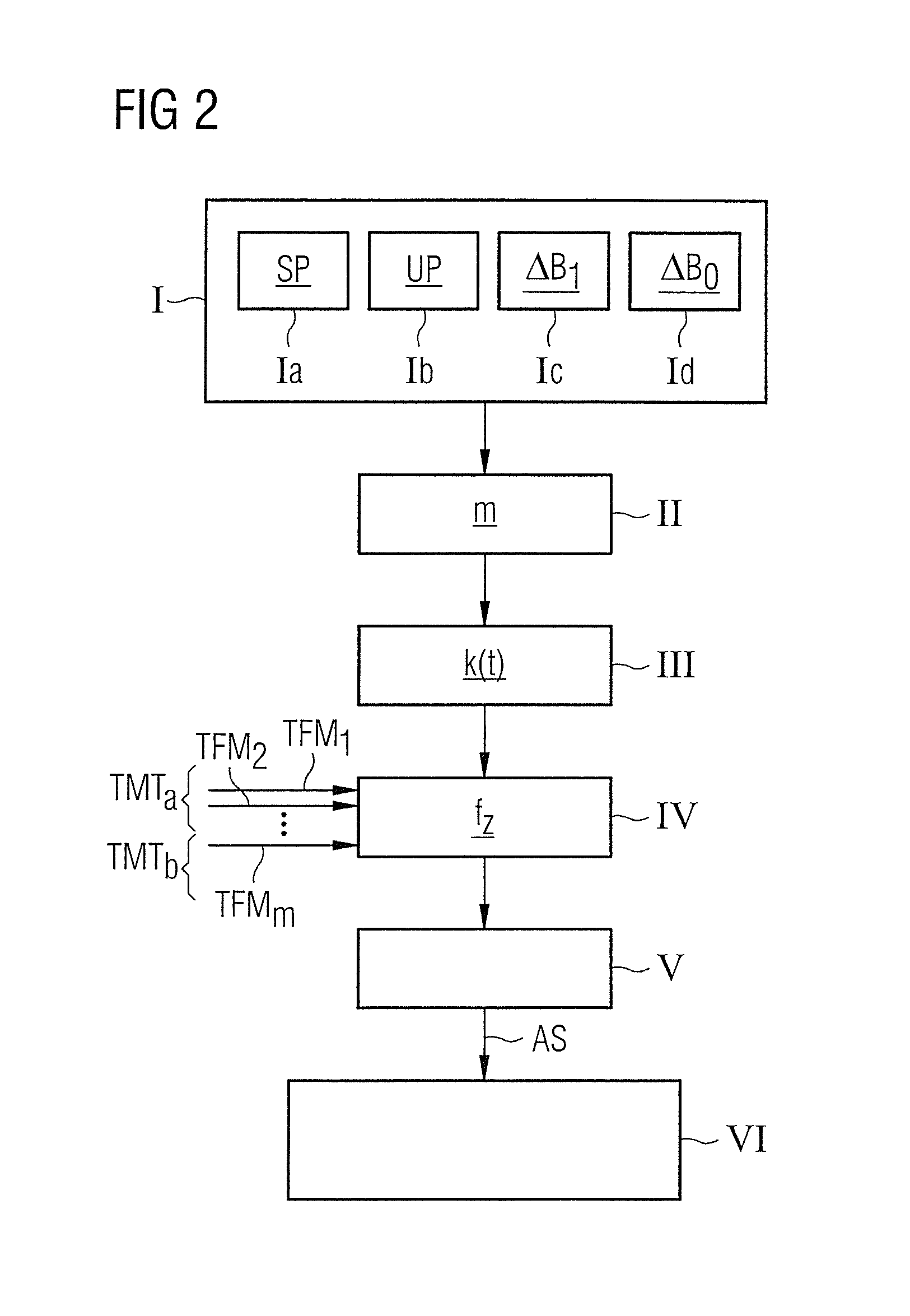Method and apparatus for determination of a magnetic resonance system control sequence
a magnetic resonance system and control sequence technology, applied in the direction of reradiation, measurement using nmr, instruments, etc., can solve the problems of discretization errors, delay, jitter, inadequacies of gradient system hardware, etc., and achieve the effect of significantly simplifying and speeding up the calculation method
- Summary
- Abstract
- Description
- Claims
- Application Information
AI Technical Summary
Benefits of technology
Problems solved by technology
Method used
Image
Examples
Embodiment Construction
[0047]A magnetic resonance system 1 according to the invention is schematically depicted in FIG. 1. The system includes the actual magnetic resonance scanner 2 with an examination space 8 or patient tunnel therein. A bed 7 can be driven into this patient tunnel 8 so that, during an examination, an examination subject 0 (patient / test subject) lying on said bed 7 can be supported at a defined position within the magnetic resonance scanner 2 relative to the magnet system and radio-frequency system arranged therein, or can be driven between different positions during a measurement.
[0048]Basic components of the magnetic resonance scanner 2 are a basic field magnet 3, a gradient system 4 with magnetic field gradient coils in order to apply arbitrary magnetic field gradients in the x-, y- and z-directions, and a whole-body radio-frequency coil 5. The reception of magnetic resonance signals induced in the examination subject O can take place via the whole-body coil 5 with which the radio-fr...
PUM
 Login to View More
Login to View More Abstract
Description
Claims
Application Information
 Login to View More
Login to View More - Generate Ideas
- Intellectual Property
- Life Sciences
- Materials
- Tech Scout
- Unparalleled Data Quality
- Higher Quality Content
- 60% Fewer Hallucinations
Browse by: Latest US Patents, China's latest patents, Technical Efficacy Thesaurus, Application Domain, Technology Topic, Popular Technical Reports.
© 2025 PatSnap. All rights reserved.Legal|Privacy policy|Modern Slavery Act Transparency Statement|Sitemap|About US| Contact US: help@patsnap.com



